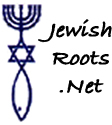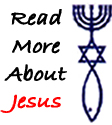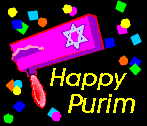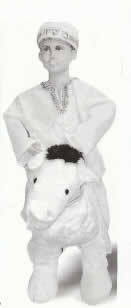






![]()
| Article Bookmarks | |
| Culture and Tradition | Messiah in the Holiday |
| Uniqueness of Holiday | Lessons from Purim |
| Alcohol and Purim | Share with Friends |
 Purim literally means “casting of lots.” The holiday gets its name from Haman casting lots for the day that destruction of the Jews in Persia would take place (Esther 3:7). Each lot was known as a "pur." The date selected was the 13th day of Adar. Purim is also celebrated because this is the day that there was rest after the previous days battle.(1) The holiday is celebrated on the 14th or 15th depending on where you live. This holiday shares the 14th of Adar with another important event in Jewish history. The festival of Nikanor was celebrated on this day in remembrance of a Maccabbian military victory.
Purim literally means “casting of lots.” The holiday gets its name from Haman casting lots for the day that destruction of the Jews in Persia would take place (Esther 3:7). Each lot was known as a "pur." The date selected was the 13th day of Adar. Purim is also celebrated because this is the day that there was rest after the previous days battle.(1) The holiday is celebrated on the 14th or 15th depending on where you live. This holiday shares the 14th of Adar with another important event in Jewish history. The festival of Nikanor was celebrated on this day in remembrance of a Maccabbian military victory.
The Book of Esther is the story of Purim:
“For if you remain silent at this time, relief and deliverance will arise for the Jews from another place and you and your fathers' house will perish. And who knows whether you have not attained royalty for such a time as this?” (Esther 4:14)
Many consider Purim the most joyous holiday of the year. Purim is celebrated with joy in knowing that the Jews were able to overcome their planned destruction. Scholars differ on the actual historical date of the holiday but it can be narrowed down to 538-420 B.C.E.
The setting for this holiday takes place in Persia, (modern day Iran) when the Persian King Ahasuerus (also known as Achavarosh and Xerxes, his name may vary slightly depending on the biblical translation you are reading), following the advice of his advisor Haman, gives the order for all Jews to be killed. Esther, a Jewish woman who was being raised by her older uncle (Mordechai), became queen and was able to help in saving the Jewish community. Haman, the king's advisor, convinced the king to put forth the order to kill the Jews. In an ironic ending, Haman ends up hanging from the very gallows he had built to hang Mordechai.
King Ahasuerus (also known as Achavarosh and Xerxes, his name may vary slightly depending on the biblical translation you are reading), following the advice of his advisor Haman, gives the order for all Jews to be killed. Esther, a Jewish woman who was being raised by her older uncle (Mordechai), became queen and was able to help in saving the Jewish community. Haman, the king's advisor, convinced the king to put forth the order to kill the Jews. In an ironic ending, Haman ends up hanging from the very gallows he had built to hang Mordechai.
A careful reading of the Book of Esther reveals that the story of Purim is the unfolding of the Abrahamic Covenant. The clearest picture of Genesis 12:3 is found in the hanging of Haman on the very gallows he had prepared for Mordecai. As the passage promised, "...I will curse him who curses you."(2)
The holiday is celebrated on the 14th or 15th of Adar depending on where you live. The Jews of Shushon (Persia which is modern day Iran) originally observed the festival on a different day than the Jews who lived elsewhere. Purim celebrated on the 14th is known as Purim of the open cities. Purim celebrated on the 15th is known as Purim of the walled cities.
 In Israel, many parents use this holiday to spend time with their kids having fun and shopping. In Israel, there is also a parade.
In Israel, many parents use this holiday to spend time with their kids having fun and shopping. In Israel, there is also a parade.
It is common to have Purim carnivals with costumes resembling the biblical characters.
There are four good deeds that people try to accomplish at Purim time.
1) To hear the reading of the Megillot Ester (Book of Esther) at a group gathering. This developed into a custom several hundred years after the actual event took place. The reading of the scroll of Ester was turned into an annual obligation because it highlighted God's miracles.
2) To enjoy an atmosphere that encourages celebration with food and drink.
3) Helping out at least two people who are less fortunate than we are (charity) by giving them gifts on the 14th of Adar.
It has also become a tradition (Machatzit Hashekel) to give 3 half-dollar coins to charity to commemorate the half-shekel given by each Jew in the time of the Holy Temple. This good deed is usually done in the synagogue.(1)
4) Giving gifts to a friend who is not necessarily poor. These ready-to-eat gifts might take the form of a fruit basket (Shalach Monot), pastry or beverage. Men should send to men, women to women and when possible, sent through a third party.
Purple is often used in decoration because it is the color connected to royalty.
Today, on the holiday of Purim, it is common for the congregation to gather together to hear the book of Ester read aloud. When Haman’s name is read, because he is considered the arrogant advisor/villain, noise is made by everyone in order for the reading to momentarily have to stop. This provides the opportunity to drown out the name of Haman, who is considered the evil villain. Children like this because this is the only time where it is permissible for children to make noise during a service where the word of God is being read. Some congregations hand out noisemakers to help with this process, and it is all done in fun. The idea of making so much noise is based on Deuteronomy 25:19. Haman is a relation to Amalek, therefore an effort is made through a little noise to "blot out his name."
An example of a homemade noisemaker would be a soda can that is emptied and allowed to dry. A handful of pennies is added and shaken. The kids can decorate the can.
Another custom that is unique to Purim involves people stomping their feet with shoes that have Haman's name written on them. It is common for people to dress up in a costume often portraying a king, queen, or even Haman himself. Some congregations have carnivals and hand out candy in an effort to add to the festival atmosphere.
Sometime hilarious skits known as purimshpiel are performed.
 Special
bakery treats are made, including the famous Purim cookies known as a Hamantaschen. The name means Haman’s pockets, and the triangular cookies are
supposed to look like a hat that Haman may have worn. Some refer to these cookies as "Haman's ears" or "Ozna Haman."
Special
bakery treats are made, including the famous Purim cookies known as a Hamantaschen. The name means Haman’s pockets, and the triangular cookies are
supposed to look like a hat that Haman may have worn. Some refer to these cookies as "Haman's ears" or "Ozna Haman."
Here is a cookie recipe for this popular Purim treat.
The Book of Esther is the only other Book in the Old Testament besides the Book of Ruth with a woman’s name.
God's name is actually never mentioned in the scripture. God's hand or fingerprints however, can be seen everywhere as He sovereignly controls each piece of the story. Since God did not feel it necessary to include His name when the Book was written (all scripture is written by inspiration of the Holy Spirit), then we should not concern ourselves with the fact that it is a book of the Bible but does not contain His name directly.
God's name is mentioned in the Book of Esther when reading from the Septuagint (a Greek copy of the Old Testament). While in most situations the Septuagint is similar to the English versions of the Bible, the Septuagint adds over 100 verses to the canonized version of the Book of Esther.
There are no quotes in the New Testament referring specifically to the Book of Esther.
Queen Esther's Persian name was Esther. Queen Esther's Hebrew name was Hadassah (meaning myrtle). This is the name that the largest Jewish women's organization has chosen in order to honor Queen Esther. To learn more about this organization, visit Hadassah's Web Site.
In Jewish literature, this book is one of five books that make up the five Megilloth. The other four are Song of Solomon, Ruth, Ecclesiastes, and Lamentations.
The 13thday of Adar (the day before Purim) is now a fast day known as the Fast of Esther. It lasts from sunrise to sundown.
Unconfirmed tradition says that Queen Vashti (the queen Esther replaced) was ordered to appear naked before the kings friends and she refused. She lost her position as queen for this and was executed.
In Persian law, once the king issues a decree, there was no way to rescind it. A new decree could be given to offset the old. In Purim, we read the first decree calling for the Jews to be killed and then a new decree issued allowing for the Jews to fight back.
Another area of Persian law declared a person could not come into the king's presence without being summoned. If they did, it was possible to be put to death as a punishment. Esther fasted for three days to prepare herself, and then went to the king. He welcomed her and the Lord provided.
When the Jewish calendar has a leap year, a second month of Adar is added, and the observance of Purim is postponed until the second date. Some do celebrate two Purims. If this happens, they are referred to as Purim Katan (small) and Purim Gadol (big).
It is possible that Mordecai and Esther were named after Mesopotamian deities Ishtar and Morduk.(3)
Out of all the holidays in Judaism, Purim stands alone in several ways. In many congregations, it is customary to have a drink of alcohol. Several people who welcome the Sabbath every Friday night have a drink of wine while they say the blessing. Wine can often be found at the Passover Seder table and on a few other occasions. On Purim, the drinking is for a different reason.
When celebrating Purim, many Rabbis encourage their congregations to live it up. The celebrator can (and some believe should) celebrate so much that they can no longer recognize the difference between the words Haman and Mordechai. This is the one holiday where it is permitted if not expected to get drunk. (Megillah 7b)
One reason for this may be related to the Hebrew act of Gematria. The two phrases "cursed be Haman" and "blessed be Mordecai" are said to have the same numerical value of 502.
Tradition does not necessarily say who wrote the Book of Esther although many comments concerning the holiday can be found in the Talmud. The Talmud states that the men of the Great Synagogue wrote the Book of Esther (Baba Batra 15a). Others believe it may have been Mordechai, Ezra or Nehemiah.
 In this story we can see God's certain purpose to preserve the Jewish race necessary for the Messiah to be born. We see God's timing being perfect.
In this story we can see God's certain purpose to preserve the Jewish race necessary for the Messiah to be born. We see God's timing being perfect.
We can also see that while the king did order the death of the Jews, he provided a way that the Jews could be saved. In Chapter 8 verse 17, we see the true end result of God's work. Many people decided to leave their Pagan beliefs behind and embrace the God of Israel.
Some Jewish traditions teach that Purim will remain a holiday even when the Messiah comes to rule the earth during the Millennial Kingdom.
 The Messiah riding on a white donkey has been a surprising costume hit among religious children at Purim.(4) An old Testament verse says, "...behold the King cometh unto thee: he is just, and having salvation; lowly, and riding upon a colt the foal of an ass." (Zechariah 9:9). For more on this great prophecy please read The Coming Of Israel's King. This prophecy deals with what is known as the Triumphant Entry of our Messiah into Jerusalem marking not only the fulfilment of the Zechariah 9:9 prophecy but events that occurred the last week of His life.
The Messiah riding on a white donkey has been a surprising costume hit among religious children at Purim.(4) An old Testament verse says, "...behold the King cometh unto thee: he is just, and having salvation; lowly, and riding upon a colt the foal of an ass." (Zechariah 9:9). For more on this great prophecy please read The Coming Of Israel's King. This prophecy deals with what is known as the Triumphant Entry of our Messiah into Jerusalem marking not only the fulfilment of the Zechariah 9:9 prophecy but events that occurred the last week of His life.
A lesson learned by some Christians including the founder of Chosen People Ministries is that just as Esther and Mordecai found themselves to be in the right place at the right time, so will we, as we trust the Lord and make ourselves available to Him. He will place us where we need to be, if we are willing to go and be used by Him.(2)
Esther put her own life on the line to rescue her people. What she did was just a shadow of the redemption God had planned for His people. Esther brought a temporary reprieve from physical suffering and death. Yeshua's sacrificial death on the cross enabled the Jewish People - and every other people group on earth - to escape forever.(5)
God keeps His promises and works against (what to us might seem like) great odds to save his people. This is true, not just in the physical, but in the spiritual world. If God puts you in a position of favor with an unbeliever, whether Jewish or Gentile, perhaps His purpose for you, like Queen Esther, is to do or say something courageous. Perhaps it is you He is waiting to use as an instrument of His salvation in that persons life. As it is written in Esther 4:14: "Yet who knows whether you have come to the kingdom for such a time as this?"(6)
There are several lessons that can be learned from this holiday.
Articles that include information related to Purim include:
Make up a plate of Hamantaschen and share with a Jewish family.
Make up a food basket with a Jewish family and donate it to the poor.
For a list of future holidays dates check the Master Calendar Table.
The Purim Holiday is becoming more and more popular.
The entire story of Purim illustrates how their own deeds came back to confound those who wished Israel ill.(3)
Nebuchadnezzar, too, unwittingly brought about the failure of his own plans. By bringing to Babylon the finest youngsters of Jerusalem, he expected to deny Israel the benefits of its finest talents and by draining Jerusalem of its greatest scholars, he thought he was forever stunting Israel's capacity for spiritual growth and independent nationhood. Instead, Daniel and his colleagues, and Mordechai and his colleagues, built the foundations of a flourishing Torah community in exile and of the later generation that would go back home and rebuild the Temple. And they sanctified God's Name publicly so that even Nebuchadnezzar was forced to declare his own acknowledgment of God's greatness (2:47; 3:28; 4:34).(3)
Connection between Purim and Yom HaKippurim: On Yom HaKippurim, (the full name of Yom Kippur), we strive for 25 hours to be like angels, suppressing our physical needs, and beseeching and praising G-d as do the angels. But strive as we may, we are not angels, and heaven is not our abode. Yom HaKippurim, in Hebrew can mean, a day like Purim. For Yom Hakippurim is as close as we can get to Purim itself! On Yom Hakippurim we begin with a festive meal before embarking upon our day long fast. On Purim, we begin with the Fast of Esther, and conclude with a day long celebration in which we hear the Megillat Esther, send charity to the poor, gifts of food to our friends, and enjoy a festive repast – a seudat mitzvah – literally a commanded meal.(7)
1). Lubavitch Chabad of Peoria Jewish Art Calendar 5766.
2). Chosen People Ministries March 2006.
3). ArtScroll Tanach Series, Daniel xxix.
4) Image of Messiah on a donkey is a Courtesy photo - The Jerusalem Post from Everlasting Nation Magazine (IBJM) - May-June 2005
5). A Rabbi Looks At The Last Days by Rabbi Jonathan Bernis p.170
6). Jews For Jesus Newsletter March 2007.
7). The Temple Institute. (templeinstitute.org Newsletter 2-28-2007).
Also contributing to this page was information from The Biblical And Historical Background Of The Jewish Holy Days, by Abraham P. Bloch is copyrighted material and was used with permission of the publisher. KTAV Publishing, 900 Jefferson Street. Box 6249, Hoboken, NJ 07030-0102.
Information from Gates of Eden, The Botkin Bimonthly (Daniel Botkin) was used by permission. Gates of Eden, P.O. Box 2257, East Peoria, Il 61611-0257.